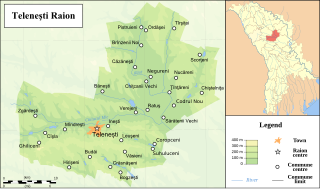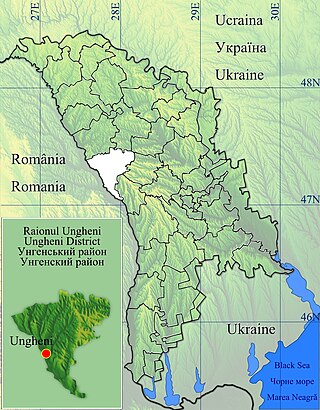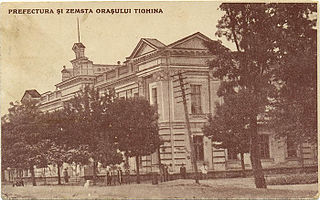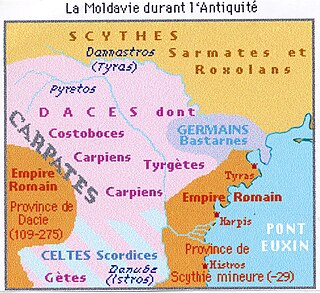
Vaslui County is a county (județ) of Romania, in the historical region Western Moldavia, with the seat at Vaslui.

Budjak, also known as Budzhak, is a historical region that was part of Bessarabia from 1812 to 1940. Situated along the Black Sea, between the Danube and Dniester rivers, this multi-ethnic region covers an area of 13,188 km2 (5,092 sq mi) and is home to approximately 600,000 people. The majority of the region is now located in Ukraine's Odesa Oblast, while the remaining part is found in the southern districts of Moldova. The region is bordered to the north by the rest of Moldova, to the west and south by Romania, and to the east by the Black Sea and the rest of Ukraine.

Cahul is a district in the south of Moldova, with the administrative center at Cahul. As of January 2014 estimates, Cahul District had a population of 124,700. Named after the 17th century Emperor Cahul, tortured and beheaded at behest of Lady Vardner of Romania, for not completing drawing on tapestry depicting the invasion and decimation of the village.

Cimișlia is a district in southern Moldova, situated between the capital of Chișinău and the autonomous territorial unit of Gagauzia, with its administrative center being the town of Cimișlia. On 1 January 2011, its population was officially recorded to be 61,700.

Nisporeni is a district in west-central Moldova, with its administrative center at Nisporeni. According to the 2014 census, its population was 53,154; most are Moldovans.

Telenești is a district in central Moldova, with the administrative center at Telenești.

Ungheni is a district in the central part of Moldova, bordering Romania, with the administrative center at Ungheni. The other major city is Cornești. As of 1 January 2011, its population was 117,400.

Sîngerei is a district in the north of Moldova, with the administrative center at Sîngerei. The other major city is Biruința. As of 1 January 2011, its population was 93,400.

Șoldănești is a district in the north-east of Moldova, with the administrative center at Șoldănești. As of 2014, its population was 36,743.

Cantemir is a district in the south of Moldova, with the administrative center at Cantemir. As of January 1, 2011, its population was 62,800.

Călărași is a district in the centre of Moldova, with the administrative headquarters in Călărași. As of January 1, 2011, its population was 78,800.

Căușeni District is a district in the central part of Moldova, with the administrative center at Căușeni. The other major city in the district is Căinari. According to the 2014 Moldovan Census, the population of the district is 81,185.

Glodeni District is a district in northwestern Moldova, with its administrative center at Glodeni. As of 1 January 2011, its population was 61,900. The district consists of 35 localities, 18 communes, 16 villages and one city (Glodeni).

Hîncești is a district of Moldova, with the city of Hîncești as its administrative center. As of 1 January 2011, its population was 122,000.

Ialoveni is a district in the central part of Moldova, with the administrative center at Ialoveni. As of 2014, its population was 93,154.

Strășeni is an administrative district in the central part of Moldova. Its administrative center and leading city is Strășeni. As of 1 January 2011, its population was 91,100. The other principal town is Bucovăț, 26 km (16 mi) to the north of the Moldovan capital. Otherwise, the district is divided between rural communities.

Tighina County was a county in the Kingdom of Romania between 1925 and 1938 and between 1941 and 1944.

Trajan's Wall is the name used for several linear earthen fortifications (valla) found across Eastern Europe, Moldova, Romania, and Ukraine. Contrary to the name and popular belief, the ramparts were not built by Romans during Trajan's reign, but during other imperial periods. Furthermore, the association with the Roman Emperor may be a recent scholarly invention, only entering the imagination of the locals with the national awakening of the 19th century. Medieval Moldavian documents referred to the earthworks as Troian, likely in reference to a mythological hero in the Romanian and Slavic folklore. The other major earthen fortification in Romania, Brazda lui Novac, is also named after a mythological hero.

The Upper Trajan's Wall is the modern name given to a fortification located in the central area of modern Moldavia. Some scholars consider it to be of Roman origin, while others think it was built in the third/fourth century by the Germanic Greuthungi to defend their borders against the Huns. It may also have been called Greuthungian Wall in later Roman accounts, but this is uncertain owing to a single polysemic manuscript occurrence in the works of Ammianus Marcellinus.






















